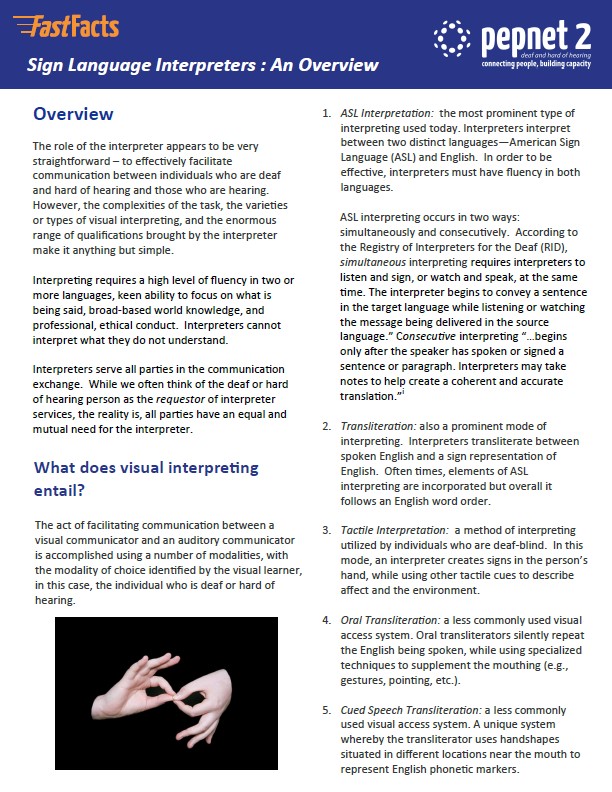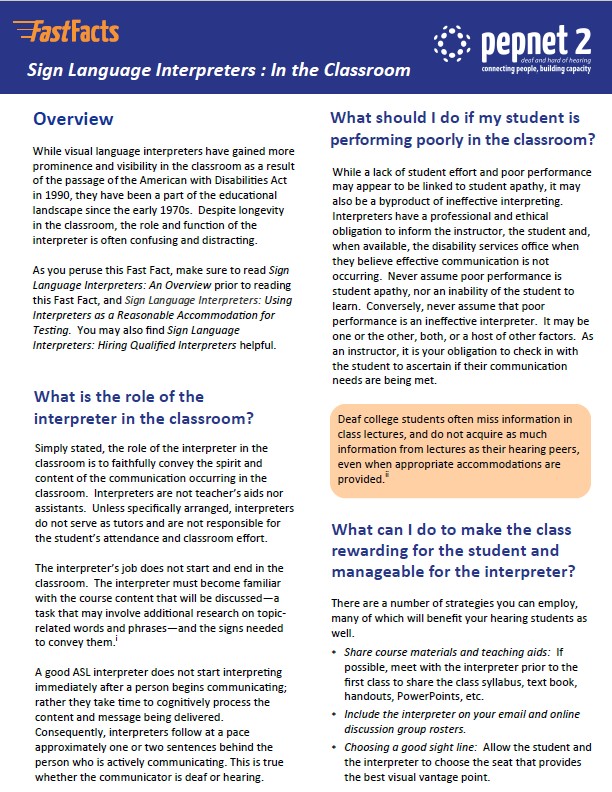5 Learning Center results found.

Sign Language Interpreters: An Overview
The role of the interpreter appears to be very straightforward – to effectively facilitate communication between individuals who are deaf and hard of hearing and those who are hearing. However, the complexities of the task, the varieties or types of visual interpreting, and the enormous range of qualifications brought by the interpreter make it anything but simple.
about pepnet, fast-fact

Sign Language Interpreters: In the Classroom
While visual language interpreters have gained more prominence and visibility in the classroom as a result of the passage of the American with Disabilities Act in 1990, they have been a part of the educational landscape since the early 1970s. Despite longevity in the classroom, the role and function of the interpreter is often confusing and distracting.
about pepnet, fast-fact, interpreters

Benefits of Sign Language Interpreting and Text Alternatives for Deaf Students' Classroom Learning
Presents findings, which combined with other recent studies, suggest that there is no inherent advantage or disadvantage to print materials (C-Print or CART) relative to high-quality sign language in the classroom. By the National Technical Institute for the Deaf, the University of Aberdeen, the Royal Institute for Deaf and Blind Children, the University of Western Sydney, Radboud University Nijmegen, and the University of New England. (2006).
about research